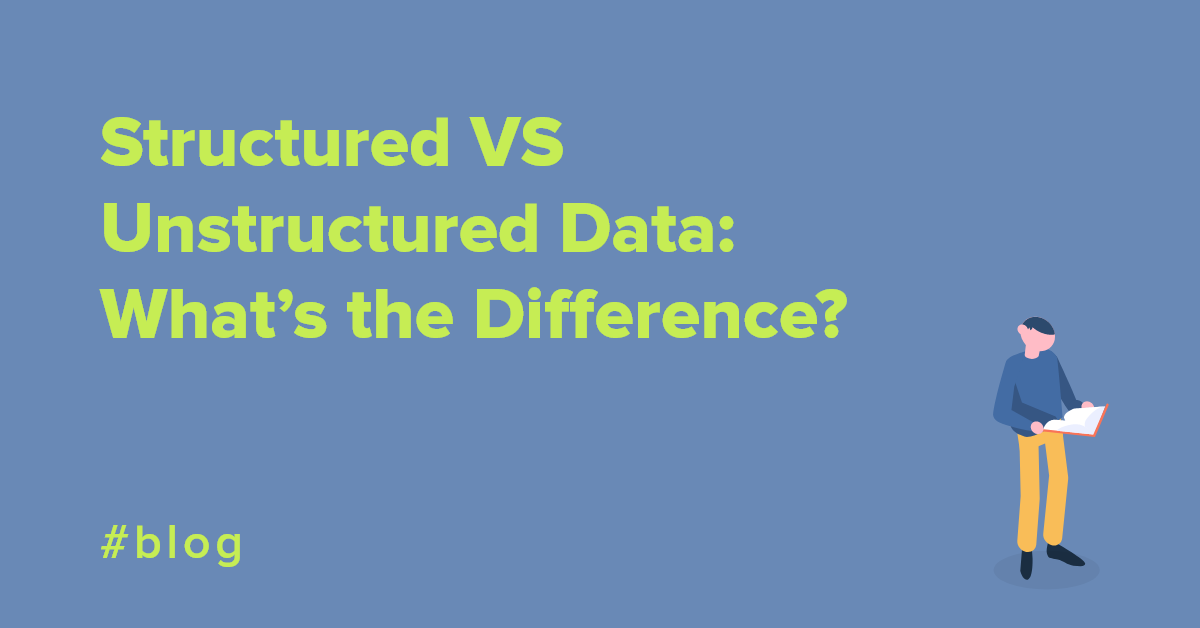Data is your organization’s lifeblood. It comes in every shape and size, but at its core, it can be divided into two categories - structured and unstructured.
As it stands, unstructured data makes up 80 percent or more of enterprise data, with structured data filling in the rest of the gaps.
There are clear differences between these two types of data. So, to help get you up to speed, we’re going to dissect the two types of data and answer the big question: what is structured vs unstructured data?
What is the difference between structured and unstructured data?
To define the two simply:
Structured data refers to data that has been formatted to fit a set structure before being housed in data storage. Unstructured data, on the other hand, is data that sits outside of this regimented structure; it’s data that is unprocessed and stored in its original format without any pre-definitions.
When considering structured data, it is usually placed in relational databases where the data contains fields, rather than less distinctive categories. Examples of these fields are: home addresses, credit card numbers, and transactions. Because of these fields, the data can be searched and segmented easily.
Alternatively, unstructured data comes in formats such as images and human text (for example, social media posts, emails and IM messages). JSON and Excel often fall into the unstructured data category because of their lack of predefined structure. Unstructured data typically resides in applications, NoSQL databases, data lakes and warehouses.
To summarize, structured data is more factual, whereas unstructured data is more objective. Your structured data will most likely contain numbers or objective facts (a person’s email address, for example), but unstructured data will most likely be made up of objective textual messages.
What are the pros and cons of each?
These two types of data have their advantages and disadvantages across your architecture and business. Here’s a breakdown of everything you need to consider:
Structured data
Advantages:
- Universally understood. The factual nature of structured data allows users of all skill levels to understand the meanings and relationships behind the data itself.
- Transferable to data tools. Many data tools thrive on structured data, making it easier for you to analyze.
- Easily digestible for data programs. Machine learning algorithms can easily crawl structured data fields, allowing for simplified data querying and manipulation.
- Space savings. Historically, businesses store data in structures to keep the space required at a minimum.
Disadvantages:
- Storage inflexibility. Your structured data is generally stored in data warehouses or relational databases, both of which have very stringent structures. If you need to change your data needs, the likelihood is you’ll have to update all of your structured data.
- Limited use cases. Pre-defined, structured data can only be used for its intended purpose, which causes some inflexibility.
Unstructured data
Advantages:
- Wider use cases. Without any pre-definition, unstructured data can be used for more than one intended purpose.
- Flexible formatting. Unstructured data can be stored in a variety of formats.
- Easy storage. Because of the onset of unstructured data – due to modern demands and the internet – storage for this type of data is now easier and cheaper.
- More data, more insights. Although harder to analyze, your organization most likely has more unstructured data than structured. This data could hold brilliant insights that could amplify your competitiveness.
Disadvantages:
- Difficult to prepare and analyze. Unless you have an experienced team of data scientists, unstructured data will remain inaccessible. Your average business user will not be able to understand its undefined format or draw value from it.
- It requires specific data tools. Most data tools, such as Excel, can’t handle unstructured data. This means your business will have to search for a specific data management tool to manipulate the data.
Two sides of the same coin
Structured and unstructured data both have their benefits and shortcomings. Whereas structured data is far easier to handle and understand, unstructured data is plentiful and could contain a wealth of competitive insights.
In this blog post, we answered the question, ‘what is structured and unstructured data?’. Now, it’s over to your organization to determine how you can handle and draw value from each data type.










